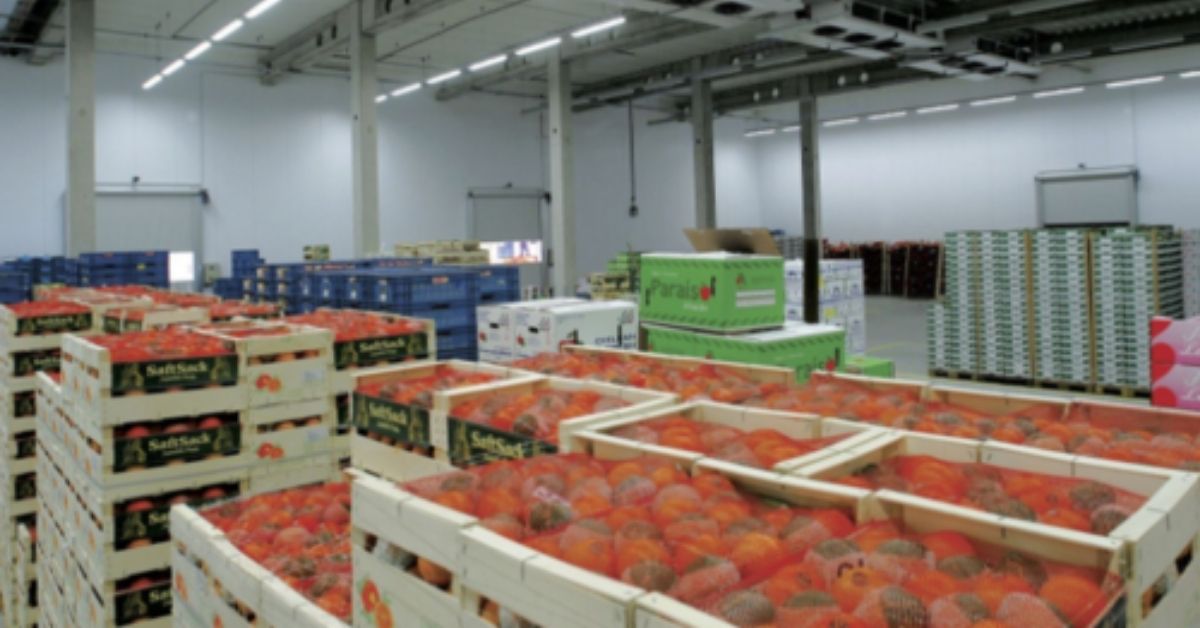Cold storage warehouses adjust temperature and humidity to prolong the life of some kinds of products, including perishables such as food, cosmetics and vaccines.
There are three cold storage segments, including deep frozen storage (from – 30oC to – 28oC), cold storage (from – 20oC to – 16oC) and cooling storage (from + 2oC to + 4oC)
The demand for cold storage facilities in Vietnam is high, especially in the seafood sector (Vietnam is the third largest seafood exporter in the world).
Trang Bui from JLL Vietnam said during the Covid-19 peak time, 30-50 percent of seafood export orders were canceled, which led to increased inventories. Cold storage warehouses had to run at maximum capacity.
While demand is high, only a few enterprises have invested in the segment and no one can provide full cold storage services. The cold storage supply is more plentiful in the south as demand there is higher, while 60 percent of the market share is in the hands of foreign investors.
The first cold storage in Vietnam was built in 1996 by Konoike Vinatrans, a Vietnam-Japan joint venture. In 1998, Swire Cold Storage from Australia built one of the most modern cold storage facilities at that time.
In 2017, Hung Vuong JSC built two storage warehouses with total capacity of 40,000 tons of goods. The other investors include Lotte Sea (2009) and Preferred Freezer Services (2010).
The limited cold storage supply is partially blamed on the longer time that is needed to build them, rather than logistics. It is more costly to build cold storage facilities than standard warehouses.
“The investment capital for cold storage warehouses is 2-3 times higher than normal warehouses and the construction time lasts six months,” Trang explained.
“The leasing time is always long, 15-20 years. This is why there is a shortage,” she said.
The Global Cold Chain Alliance estimates that there should be 0.15 cubic meter of cold storage for every urban resident. In Australia, the current supply only satisfies half the figure.
JLL Vietnam believes that seafood cold storage warehouses operate most effectively if they are 50 kilometers from ports, while vegetable and fruit warehouses should be located near urban areas.
Demand on the rise
Michael Ignatiadis from JLL Asia Pacific said that the high population and rapid development of the middle class in Asia have led to an increased demand for fresh and high-quality food, which is behind the increase in demand for cold storage.
Analysts said they can see a cold storage construction boom. According to Emergen, cold storage construction volume will have value of $18.6 billion by 2027, with an average growth rate of 13.8 percent per annum.
However, even with this construction speed, a shortage may still occur because of the demand for fresh food, according to Ignatiadis.
Meanwhile, Forrester predicted that shopping services in Asia Pacific would increase by 30 percent per annum until 2024.
In the US, the proportion of food online shopping would double by 2025 to 21.5 percent, according to Mercatus, an e-commerce firm, and Incisiv.
In the UK, 80 percent of raw food is imported and the shortage of fresh fruit and vegetables is more alarming.
Alan Selby from JLL’s Integral said demand will increase over time as a result of the growing tendency of people growing vegetables and fruits and preserving them at home.
To obtain the growth targets in the future, the expert from JLL believes that Vietnam’s logistics industry needs to overcome many problems.
In the immediate time, to enter the next stage of industrial logistics development, and to be more competitive, a reasonable investment level is needed. It is also necessary to develop a network of highways and utility networks, including renewable energy.
The cross-border trade exchange process also needs further improvement in time and cost.
Cross-border transaction costs, including costs for documents and procedure compliance as well as import/export expenses in Vietnam, are less competitive than regional countries.
Trang Bui from JLL Vietnam stressed that with the current cold supply chain managed by mostly small and medium suppliers, cold storage centers offer a big investment opportunity.
Source : Vietnam Net








